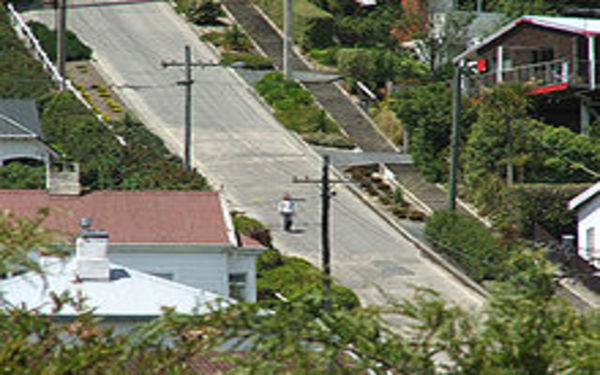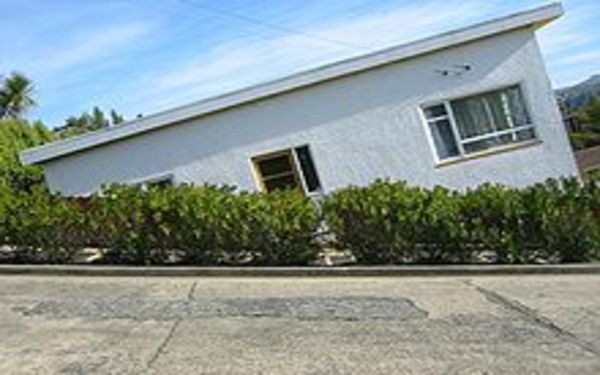 |
DUNEDIN, NEW ZEALAND
A short straight street of a little under 350 metres length, Baldwin Street runs east from the valley of the Lindsay Creek up the side of Signal Hill towards Opoho, rising from 30 metres (98 ft) above sea level at its junction with North Road to 100 metres (330 ft) above sea level at the top, an average slope of slightly more than 1:5. Its lower reaches are of only moderate steepness, and the surface is asphalt, but the upper reaches of this are far steeper, and surfaced in concrete, for ease of maintenance (asphalt would flow down the slope on a warm day) and for safety in Dunedin's frosty winters. At its maximum, the slope of Baldwin Street is approximately 1:2.86 (19° or 35%) that is, for every 2.86 metres travelled horizontally, the elevation rises by 1 metre.
The street's steepness was unintentional. As with many other parts of Dunedin, and indeed New Zealand, streets were laid out in a grid pattern with no consideration for the terrain, usually by planners in London. In the case of Baldwin Street (and much of the Dunedin streetplan), the layout was designed by Charles Kettle in the late 19th Century. The street is named after William Baldwin, an Otago Provincial Councillor and newspaper founder, who subdivided the area. Despite its apparent nature, Baldwin Street is linked across the top by Buchanan Street, a footpath following an otherwise unformed unpaved road linking it with Calder Avenue and Arnold Street, which are unformed in their upper reaches (where Baldwin is at its steepest). The streets running parallel to Baldwin are all quite steep: Arnold Street (1:3.6), Dalmeny Street (1:3.7), and Calder Avenue (1:5.4).
The street is the venue for an annual event in Dunedin, the "Baldwin Street Gutbuster". Every summer since 1988 (usually in February),[1][6] this exercise in fitness and balance involves athletes running from the base of the street to the top and back down again. The event attracts several hundred competitors annually, and as of 2008 the record is 1:56, set in 1998.
 |
 |
 |
CAITHNESS, SCOTLAND
The street originated in 1883, when 1 Ebenezer Place was constructed; the owner of the building, a hotel at the time, was instructed to paint a name on the shortest side of the hotel. It was officially declared a street in 1887.
But for its status as a street in its own right, the location of Ebenezer Place would be a junction of Union Street with River Street.
 |